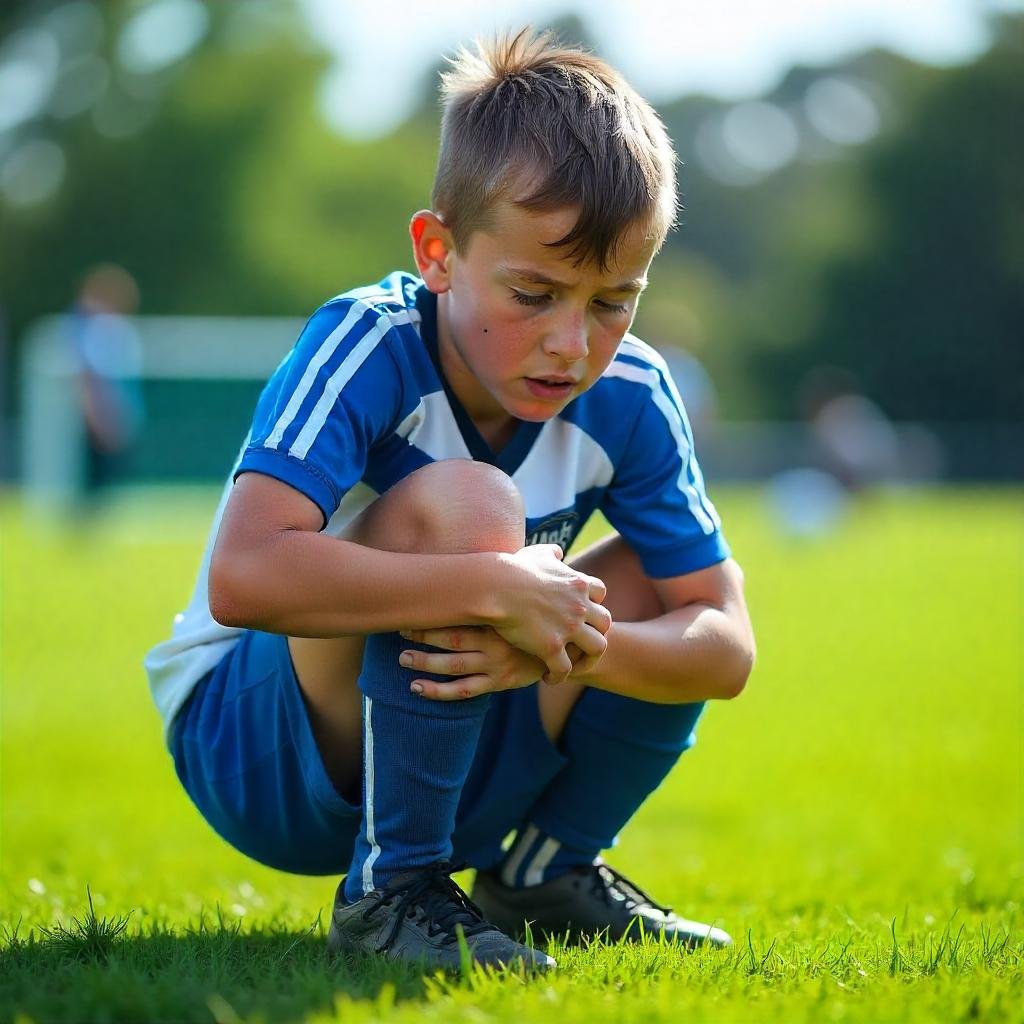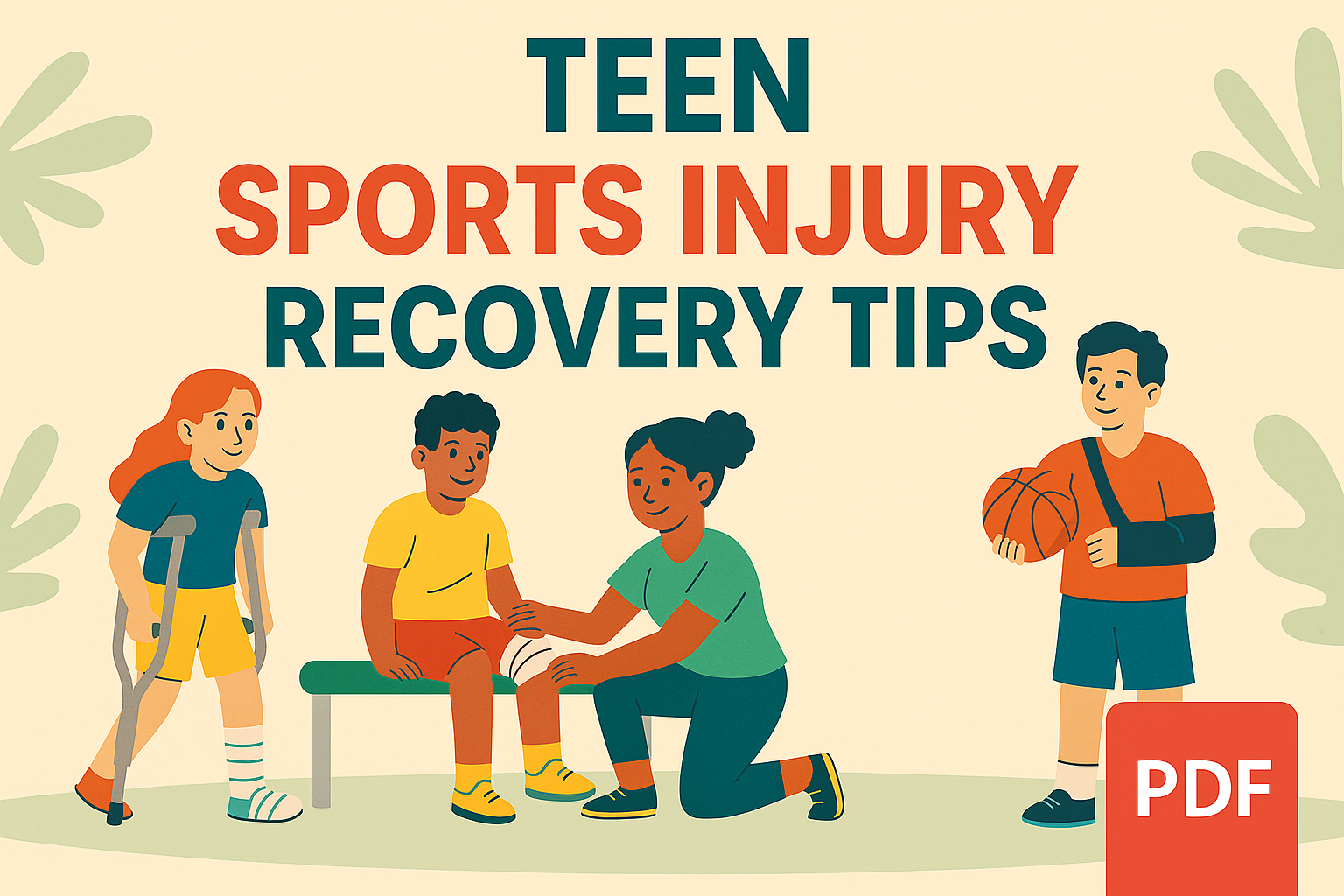In the world of teenage athletics, passion meets perseverance — but sometimes, it also meets injury. Whether it’s a twisted ankle during soccer practice or a strained shoulder from swimming laps, sports injuries in teens can be both physically painful and emotionally discouraging.
But here’s the Teen Sports Injury Healing Tips for a Faster & Safer Return: With the right guidance and mindset, recovery can become an empowering chapter — not a setback.
Why Recovery Deserves Respect
Many teens (and even adults) treat sports injuries like minor inconveniences — something to “walk off.” But a rushed recovery or skipped healing steps can lead to long-term consequences, re-injury, or even quitting a sport they love.
Proper recovery is not about sitting idle. It’s about healing smart, listening to the body, and giving it what it needs to rebuild — stronger than before.
1. Recognize the Injury Early
The first step toward recovery is acknowledging it. Swelling, stiffness, lingering pain, or reduced movement — these aren’t badges of toughness. They’re the body’s way of waving a red flag.
Encourage your teen not to “push through” pain. A short break now can prevent a long break later.
2. Get a Professional Evaluation
Even for seemingly minor injuries, a doctor’s assessment can prevent misdiagnosis. Physical therapists, sports doctors, and even trained athletic coaches can offer tailored advice — not just rest vs. no rest, but how to rest smartly.
Early guidance = faster healing.

3. Focus on Nutrition & Hydration
Healing isn’t just about what you do — it’s also about what you eat.
Teen Sports Injury Healing Tips for a Faster & Safer Return should focus on:
- Protein to rebuild muscle tissue
- Vitamin C to repair ligaments and skin
- Zinc & calcium for bone recovery
- Plenty of water to support circulation and reduce inflammation
A healthy plate is a powerful recovery tool.
4. Movement Matters — When Done Right
Bed rest isn’t always the answer. Depending on the injury, gentle stretching, physical therapy, or low-impact activities like swimming or walking can keep the body engaged and the mind active.
Staying still for too long can actually slow healing, decrease flexibility, and lower motivation.
5. Address the Emotional Side of Injury
For teens, injury doesn’t just hurt the body — it often shakes their confidence. They might feel left out, frustrated, or afraid they’ll fall behind in performance or social status.
Check in with their emotions, not just their physical pain. Let them express frustration. Help them set new, short-term goals. Remind them this injury is temporary — their passion is not.
6. Plan the Return Carefully
The return to sports should be gradual, not immediate.
- Start with basic movements or light drills
- Check in regularly with a coach or therapist
- Make sure pain doesn’t return
- Prioritize form over speed or strength
Returning too soon can undo weeks of progress.
Final Thoughts: Healing Is a Form of Strength
Injury recovery teaches teens lessons that go beyond sports: patience, discipline, body awareness, and resilience. These are life skills, not just athletic ones.
If your teen — or someone you care for — is navigating a sports injury, know this: The path to recovery can be just as defining as the path to victory.
It’s packed with practical checklists, nutrition plans, mindset support, and tools for parents and coaches.
Start healing smarter today.
Visit more blogs for your daily life problems here

